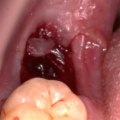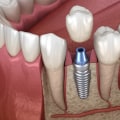Tooth extractions are a common dental procedure used to remove teeth that are damaged, decayed, or otherwise unable to be repaired. There are two types of tooth extractions: simple and surgical. Simple extractions are used to remove teeth that are visible and easily accessible, while surgical extractions require an incision in the connective tissue to access the tooth. Both types of extractions can be performed by a general or family dentist or an oral surgeon.
Simple extractions are used when the tooth is visible, above the surface of the gum and still in a cohesive piece. The dentist uses an instrument called an elevator to loosen the tooth before removing it. If the tooth is broken or decayed, there may not be enough tooth above the gum line or it may be too fragile to be removed intact. The shape, size and position of the tooth also influence whether it is extracted with a simple or more complicated extraction.
Surgical extractions are much more intensive and require an incision in the connective tissue to access the tooth. This type of extraction is necessary when the tooth is below the surface of the gum or is cracked. Cases such as a tooth that hasn't come out yet, the extraction of wisdom teeth, and teeth that are broken leaving the root intact all require surgical removal. Surgical extractions are usually performed by oral surgeons, although general dentists are trained to do so.
To make the procedure comfortable for you, general anesthesia is applied. During the process, you may feel light pressure, but you may not feel pain. If bone covers part of the tooth, the surgeon will remove the bone to fully expose and extract the tooth. When a dental professional refers a patient to an oral surgeon to have a tooth extracted, it is to ensure that the tooth is extracted or managed with the highest level of experience.
Tooth extractions are also performed for a variety of other reasons such as extracting baby teeth that don't fall out in time, impacted wisdom teeth, and dental infections that prevent organ transplants. When broken, damaged, or decayed teeth cannot be repaired with fillings or endodontic procedures, removing them may be the only option. If you have tooth pain, don't hesitate to schedule an appointment with your dentist to find out if an extraction is right for you.






